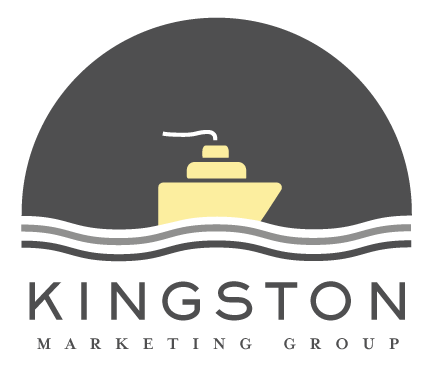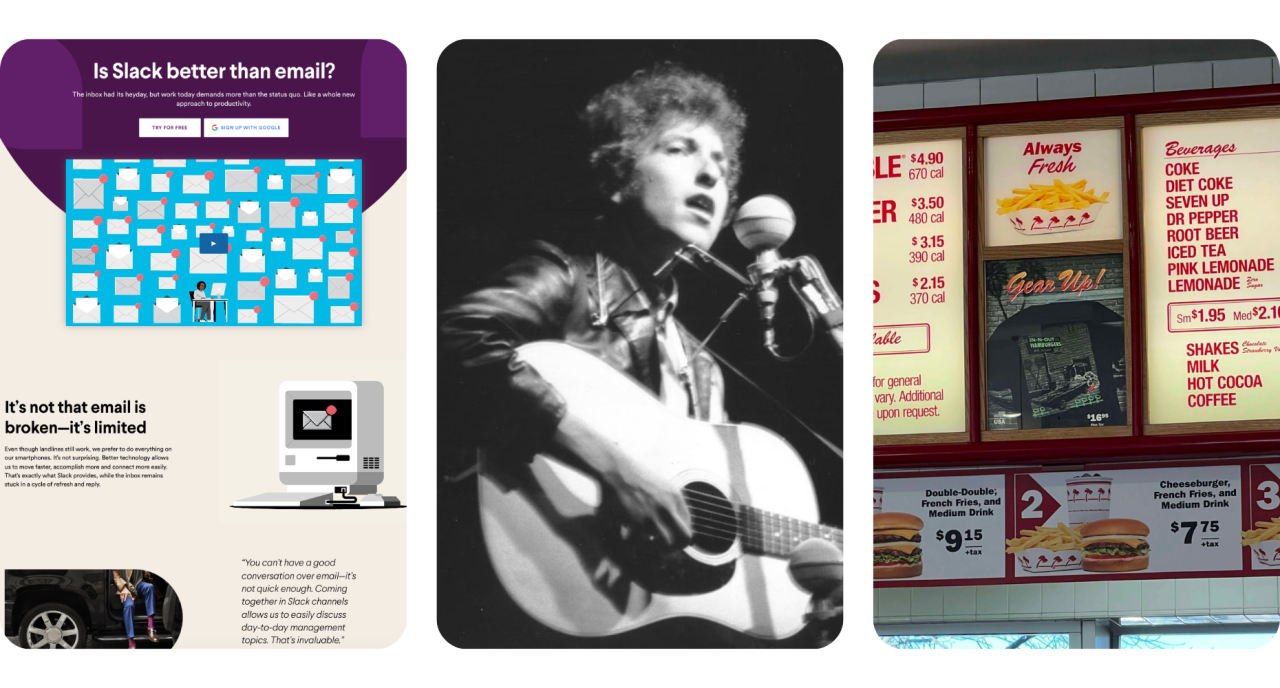Saying “No” to Grow: A case for revenue growth through focus.
By Todd Olsen, SVP of Marketing Practice
What do Slack, Bob Dylan and In-N-Out have in common?
Traditional revenue growth is tough sledding right now - capital is more expensive than it has been in a decade, our inboxes are flooded with ZoomInfo spam, and our attention is fragmented unlike any other time. We can barely keep up with the news cycle, let alone evaluate a new product or service.
This is why it’s time for a retrospective on how the best brands grow through disciplined, careful choices and extreme attention towards their best growth asset: customers.
While it’s very easy to look to product expansion or paid performance marketing to unlock growth, we believe that the majority of brands can grow more profitably and healthily through mining their existing product lines for untapped value. Specifically:
Making your product better by listening and identifying friction
Making it easy for your customers to share your product or service
Growing the right channels at the right time
Being legendary at a few things, versus pretty good at a lot of things
Here are 5 brands that are really good at saying no:
Slack started as an email killer, then built features that enhance team collaboration over time. Even their mission statement is this laser-focused statement: Making work life simpler, more pleasant and more productive. Who doesn’t want that?!
In-N-Out Burger: When will they launch a chicken sandwich? Never.
Apple: Fully realizes their product vision in a category before launching a new one. Desktops → Laptops → Music Players → Phones. Each one built on a foundation of trust and excellence. They launched the iPod 17 years after the first Mac in 1984!
Ridwell, who picks up hard-to-recycle waste from homes, has taken a one neighborhood at a time launch approach from their inception.
Bob Dylan: Didn’t plug his guitar into an electric amp with distortion until his 6th album.
3 areas to try reduction for growth:
Pick one customer group and win with them. That means laser focus and understanding of exactly what they want, then delivering it in a legendary way. You’ll know you are ready to add a second customer group when the first one is actively referring you to their cohorts and you have achieved a strong market share. Put all the secondary and tertiary customers on hold until this happens.
Make it fit - and make it awesome - We often hear this referred to as “Product fit” but at KMG we call this “Problem fit.” Pouring your product development efforts into one product that greatly exceeds expectations is far better than diluting them into multiple products that are so-so,
Pick a geography. A national or global distribution footprint and the marketing effort that comes with it can be incredibly dilutive while also having a minimal impact when spread so thin. Find a geography or a couple high impact channels or media partners to go deep with. Connected TV is a great way to go deep in a single market. Podcasts are a great way to go deep amongst a very tight interest audience. Find a regional playbook that wins, then expand from there.
Pick a channel. Brands like Oatly or Nutpods didn’t expand into grocery until establishing a strong customer base via Coffee shops (Oatly) and D2C + Amazon (Nutpods)
When is the right time to grow? Strong signals in each of the following channels can be indicators that you are ready for yes.
Internal: Your org is ready to take it on. Do your employees seem out of breath or beleaguered? Are little things slipping through the cracks? Or, conversely, is your leadership team being actively pitched by your teams on what’s next? If it’s the latter, then it may be time to start expanding.
Customer: Your customers are pulling you in. Customer satisfaction (or net promoter scores) should be best in industry before expanding. Here’s a list of industry benchmarks. Are your DAU/WAU/MAU numbers exceeding your goals? Does a significant share of your new customer growth come from referrals? This might mean you are ready to expand.
Channel: When you’re pulling versus pushing: Are channel distribution partners requesting meetings? Are their customers asking for your product? Then yes, you have created a strong foundation to grow into new channels.
At Kingston Marketing Group we start every engagement with a deep dive into your customer journey along with a clear-eyed evaluation of the marketplace and where you can win. Clients are often surprised by our candor and how often we say “No(t) a good idea.” Which is why we also evaluate our fit and say no accordingly in our first conversations with a potential client.
But when we say yes, it’s usually awesome.

